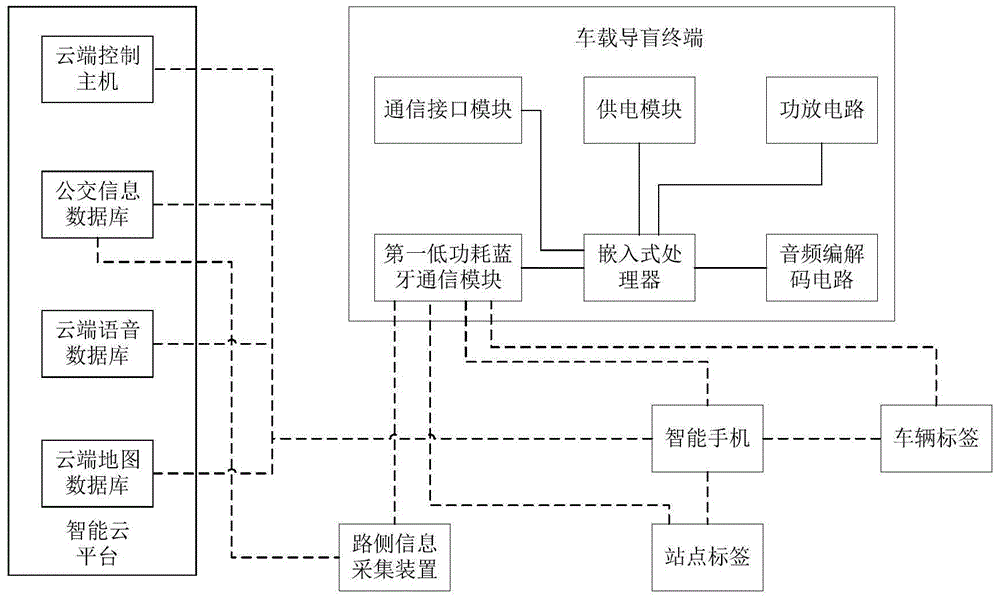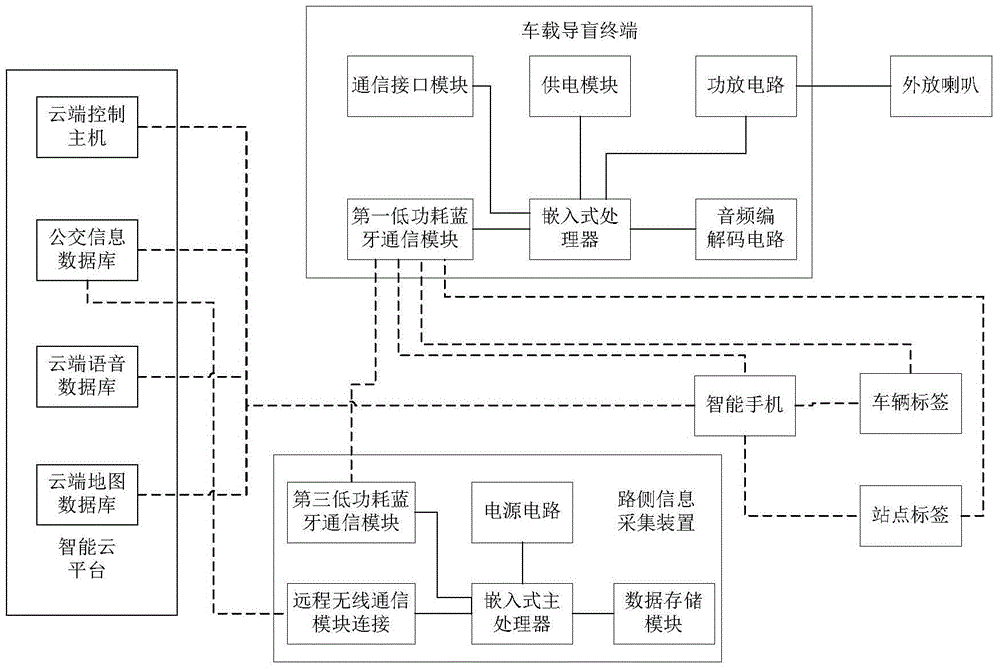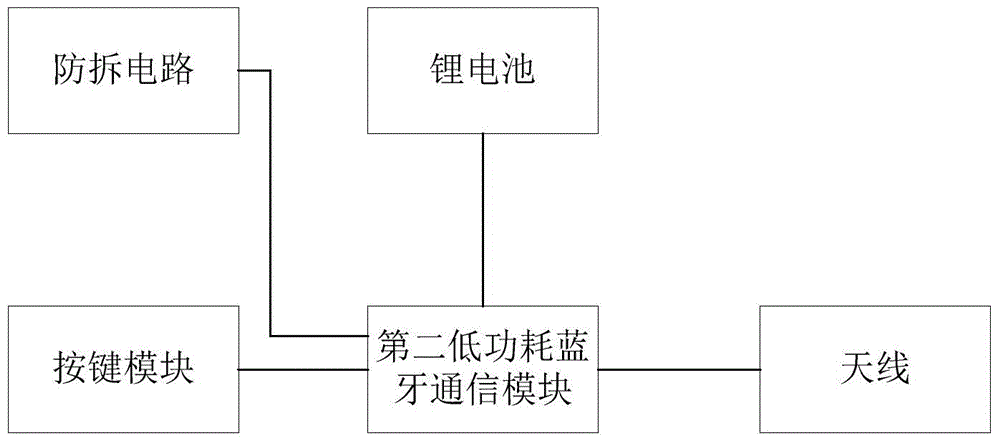System and method of helping visually impaired people take urban public buses
A technology for public transportation and people, applied in the field of information navigation, which can solve the problems of low utilization rate of guide dogs, high operation and maintenance costs, and poor sustainable operation ability.
- Summary
- Abstract
- Description
- Claims
- Application Information
AI Technical Summary
Problems solved by technology
Method used
Image
Examples
Embodiment 1
[0076] refer to figure 1 , a passenger assistance system for the visually impaired in urban public transport, including an intelligent cloud platform, a vehicle-mounted guide terminal, a smart phone, a vehicle label for uniquely identifying a bus vehicle, a station label for uniquely identifying a bus stop, and The roadside information collection device used to collect information from the vehicle-mounted blind guide terminal, the vehicle-mounted blind guide terminal and the vehicle label are installed on the bus, the station label and the roadside information collection device are installed at the bus station, and the smart phone is connected to the vehicle The blind guide terminal, vehicle tag and site tag are wirelessly connected, and the smart phone and roadside information collection device are all wirelessly connected to the intelligent cloud platform. The visually impaired can use their smartphones as an intermediary to interact with the smart cloud platform, vehicle-mo...
Embodiment 2
[0105] A method for assisting the visually impaired in urban public transport based on the ride-assist system of Embodiment 1, comprising:
[0106] S1. Obtain the travel route of the visually impaired through the smart phone and send it to the smart cloud platform; specifically: respond to the operation of the visually impaired through the smart phone, according to the common itinerary, regular route or temporary bus route selected by the visually impaired , analyze and obtain the travel route of the visually impaired, and send it to the intelligent cloud platform.
[0107] A guide app for the visually impaired is developed on the smartphone. When the visually impaired travel, they can input the travel route on the guide app through voice control, etc., which can be the "commonly used itineraries" collected from the guide app, One or more bus routes selected in the "regular route" can also be entered as a temporary bus route, input the proposed bus route through the guide app ...
Embodiment 3
[0123] This embodiment is a more detailed technical solution of Embodiment 2, including the following steps:
[0124] Step 1. The visually impaired person enters the travel route through the guide APP, and the smartphone responds to the operation of the visually impaired person, obtains the travel route of the visually impaired person, and sends it to the smart cloud platform, including the following three methods:
[0125] 1) The visually impaired use the "line collection" function in the guide app to collect "regular routes" (the route has an uplink or downlink direction, without a departure station and a destination station). After collection, the route will be saved to the guide APP client user In the favorite list of "Frequently Taken Lines" in the "Frequently Taken Lines" collection list, it is convenient for users to directly select in the future and avoid repeated input; when the visually impaired travel, they can select one or more bus lines from the "Frequently Taken ...
PUM
 Login to View More
Login to View More Abstract
Description
Claims
Application Information
 Login to View More
Login to View More - R&D
- Intellectual Property
- Life Sciences
- Materials
- Tech Scout
- Unparalleled Data Quality
- Higher Quality Content
- 60% Fewer Hallucinations
Browse by: Latest US Patents, China's latest patents, Technical Efficacy Thesaurus, Application Domain, Technology Topic, Popular Technical Reports.
© 2025 PatSnap. All rights reserved.Legal|Privacy policy|Modern Slavery Act Transparency Statement|Sitemap|About US| Contact US: help@patsnap.com



